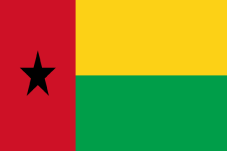For good reason, sending money is by far the most adopted form of inward remittance by people living outside their country of origin and eager to exercise their magnificent and ineludible mission to thrive for their families. Assuming that migrants’ countries of origin are generally less prosperous than those of destination, it’s likely that these remittances are having a positive impact not only on improving people’s living conditions but also on setting up local development processes.
The World Bank estimates that in 2022 Sub-Saharan expatriate workers sent back home no less than $53M. Among the recipient countries, Nigeria, Senegal, Ghana, Kenya, the Democratic Republic of Congo and Mali top the list.
The volume and impact of remittances on the destination economies are dependent on several factors such as the size of the diaspora, the pay-out country Human Development Index or the ratio of migrant money transfer on national GDPs . In 2022, the official financial contribution of migrants represented up to 10.28% and 22.9% of the GDP of Senegal and Gambia respectively (World Bank[1]). This business opportunity is at the origin of the proliferation of digital MTOs that compete to convey this considerable financial windfall, setting price and time saving as their main acquisition arguments.
In sub-Saharan Africa, inter-family solidarity and intra-community fellowship are intrinsic to social protection strategies; which, in many cases, depend exclusively on the sending capacity of their members abroad as postulated by the New Economics of Labour Migration (Stark and Bloom, 1985). The fact that, as an average, West Africans based in Europe send money 5,1 times to 3 different beneficiaries every month (Baluwo Money Transfer, 2024[2]) is irrefutable evidence of this reality.
While migrants do assume that helping their families back home is one of the core reasons why they move abroad, it is also evident that exercising this responsibility is not free of deceits and headaches.
Receiving cash or mobile money gives the recipient the freedom to acquire the goods and services (food, payment of bills, schooling, health costs, etc.) needed by the family on the spot, but it also opens the Pandora’s box to all sorts of abuses and frauds when it is diverted from the objectives for which it was intended. It is precisely this situation, so decried by many remitters, that justifies the growing use of cash-to-goods apps since they enable senders to directly acquire many products for which they were sending money. Establishing “control” as their value proposition, cash-to-goods projects do not aim to replace Money Transfer, but rather to provide alternative tools for optimizing the often scarce and irregular incomes of the migrants.
The phenomenon of leapfrogging has contributed significantly to this digital revolution.
As a matter of fact, it takes place when a community skips traditional stages of development to directly have access to the latest technologies or explore an alternative path to economic dynamism. It acts as a shortcut to adapt directly to the requirements of the global economy. In spite of the evident ensuing challenges, especially in big cities, it has opened up the participation of many Africans to the global economy thanks to access to the Internet. For migrants, it is an important added-value and a disclosure to a new world of opportunities since they can now monitor a large part of their investments and family’s spending back home from a distance.
Africa is at the top position in digital and mobile banking (World Economic Forum, 2023[3]). The future for e-commerce in the continent is, therefore, more promising since the GSMA forecasts the smartphone adoption rate in the ECOWAS region at 80% by 2030, compared with 42% today.[4]
Nowadays, existing platforms provide products and services as diverse as electricity, Internet recharge, food or construction materials. Baluwo (standing for “basic essentials” in Mandinga) is an all-in-one app that operates since 2017 from the EU, UK, USA and Canada to 17 African countries. The viability of such a commercial approach fundamentally relies on the collaboration of an extensive network of small traders, enabling the vitalization of the local economy in addition to the partnership with the main electricity and internet operators in the destination countries. The provision of a quick, safe and transparent service depends mainly on an efficient end-to-end integration that involves manifold stakeholders -from multinational firms to retailers- and entails considerable technological challenges.
In the range of stoppers that hinder the full adoption of digital services by African migrants, their low level of literacy and bancarization -derived mainly from their legal status- stand as the top factors. Nonetheless, driven by the growing trend of e-commerce and its benefits (price, commodity, access to a wider catalog of products, etc.), there is an unprecedented interest in digital services. In this mission, the companies that offer services to sub-Saharan remitters should assume as part of their social responsibility the implementation of programs that aim to upgrade low-skilled migrants’ digital status (so far limited to the use of social networks) as it impacts their daily lives.
The condition of “beneficiary” applied during so many years to the African population may evanesce drastically thanks to its demographic boom. New York Times Chief Africa correspondent Declan Walsh hits the target when he aptly says “as the world grays, Africa blooms with youth[5]”. This situation will likely be the main trigger of game rule changes in the configuration of transcontinental e-commerce.
In the meantime, migrants’ efforts will continue being essential in dealing with African families’ vital needs and the MTOs, their strategic partners to materialize it.
By Abdoulaye Fall
[1] Personal remittances, received (% of GDP) | Data (worldbank.org)
[2] Envío de dinero con Baluwo
[3] Africa is the world leader in digital and mobile banking | World Economic Forum (weforum.org)
[4] L’économie du mobile en Afrique subsaharienne 2023 (gsma.com)
[5] How the Youth Boom in Africa Will Change the World – The New York Times (nytimes.com)






















